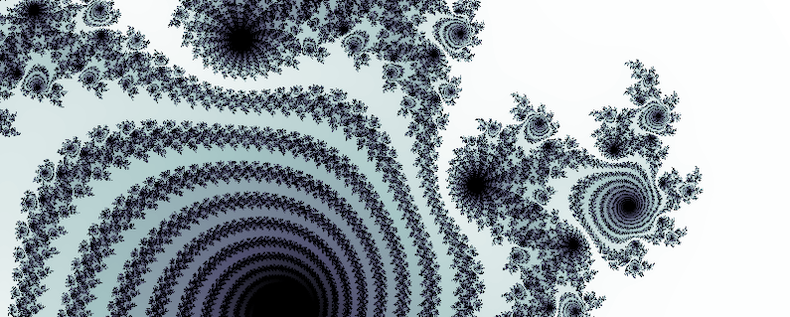|
|
|
AbstractThere will be four mini-courses of four hours each, and research talks of one hour each during the week.
Mini-courses:Geometric Inverse Problems, by Colin Guillarmou (Université Paris-Saclay). We will explain two rigidity problems for Riemannian manifolds, that consist in the determination of the metric from the lengths of its geodesics. The geodesics we can measure are either geodesics with finite lengths and endpoints on the boundary on a manifold with boundary or closed (periodic) geodesics on a closed manifold. These are called boundary rigidity and marked length spectrum rigidity.
Pollicott-Ruelle resonances in hyperbolics dynamics, by Malo Jézéquel (MIT). Statistical properties of certain hyperbolic dynamical systems may be studied using functional analytic methods (in particular, spectral theoretic tools). This approach gives rise to the notion of Pollicott-Ruelle resonances. They are "generalized eigenvalues" of an operator associated to the dynamics, and may be used for instance to describe the asymptotics of correlation functions associated to smooth observables. In this minicourse, I will define Pollicott-Ruelle resonances for smooth Anosov diffeomorphisms and then explain how the asymptotics of correlations is deduced from this notion.
Probabilistic methods in hyperbolic geometry, by Bram Petri (Sorbonne Université). Hyperbolic manifolds are Riemannian manifolds whose metric is complete and has constant sectional curvature equal to -1. Another way to phrase the latter property is to say that they are locally isometric to hyperbolic space (of the right dimension). The (spectral) geometry of such manifolds plays a role in various domains of mathematics. In this mini course I will talk about how probabilistic methods can help to solve questions on the geometry of hyperbolic manifolds.
Introduction to microlocal analysis, by Jared Wunsch (Northwestern University). This course will be a "user's guide" to pseudodifferential operators, laying out the motivation for their use and discussing their properties more or less axiomatically, without proof. Two main directions of application are to the construction of elliptic parametrices (both globally and microlocally) and to studying regularity of solutions to PDE. We will especially focus on the latter direction. The end of the class will feature a discussion of propagation of singularities for operators of real principal type, with applications to solvability of PDE, as well as a nod to the recent advances of Vasy on using propagation estimates to construct global Fredholm problems for hyperbolic equations.
Research talks:Viviane Baladi (Sorbonne Université), Anisotropic spaces applied to Sinai billiards Sinai billiards (or dispersive billiards) are (discrete or continuous time) dynamical systems having a simple and natural definition, but offering challenging technical difficulties. These difficulties are due to the presence of singularities, where derivatives blow up. The basic results of the theory were developed nearly 60 years ago by Sinai (ergodicity and mixing of the "physical" invariant measure). Very recently, we were able to adapt functional analytic tools (Ruelle transfer operators acting on anisotropic Banach spaces) to study in particular the properties of other invariant measures. I will briefly describe these tools, and I will present some recent results, ending with the construction of the measure of maximal entropy of generic finite horizon Sinai billiards flows, and some open questions. (Joint work with J. Carrand and M. Demers.)
Yannick Bonthonneau (Université Paris 13), Narrow capture problem
Maxime Fortier-Bourque (Université de Montréal), From sphere packings to extremal problems on hyperbolic surfaces I will discuss joint work with Bram Petri in which we adapt ideas from the theory of sphere packings to obtain inequalities on several invariants associated with closed hyperbolic surfaces. For instance, we were able to show that the Klein quartic maximizes the multiplicity of the first positive eigenvalue of the Laplacian in genus three. We also improve the best known asymptotic bounds on these invariants as the genus tends to infinity.
Élise Goujard (Université de Bordeaux) and Anton Zorich (Sorbonne Université), Random square-tiled surfaces of large genus and random multicurves on surfaces of large genus
Joint work with V. Delecroix and P. Zograf.
Maxime Ingremeau (Université Côte d'Azur), Semiclassical evolution of Lagrangian states into random waves In 1977, Berry conjectured that eigenfunctions of the Laplacian on manifolds of negative curvature behave, in the high-energy (or semiclassical) limit, as a random superposition of plane waves. This conjecture, central in quantum chaos, is still completely open. In this talk, we will consider a much simpler situation. On a manifold of negative curvature, we will consider a Lagrangian state (the generalization of a plane wave on a manifold). We aim to show that, when evolved during a long time by the Schrödinger equation, these functions do behave, in the semiclassical limit, as a random superposition of plane waves. We will show such a result in two situations: when the phase of the Lagrangian state is generic, and when the Laplace-Beltrami operator is perturbed by a small generic potential.
Gabriel Rivière (Université de Nantes), Orthospectrum of convex bodies and Poisson formulas I will start by decribing two "variants" of the Poisson formula that are due to Guinand and Meyer. I will then show how these two formulas can be interpreted in terms of the orthospectrum (a family of characteristic lengths) of a convex body with respect to some lattice. With that interpretation in mind, Guinand-Meyer's formulas correspond to the case where the convex body is reduced to a point in dimension 3. Using tools from differential geometry and from Fourier analysis, I will explain how this formula can be extended to general (strictly) convex bodies and how it encodes certain geometric quantities (mixed volumes). This is a joint work with Nguyen Viet Dang and Matthieu Léautaud.
Gunther Uhlmann (University of Washington), Microlocal Analysis and Geometric Inverse Problems This talk is a personal journey through several geometric inverse problems where techniques of microlocal analysis have been useful. These include Calderón's inverse problem, the boundary rigidity and lens rigidity problem, and some inverse problems arising in general relativity.
|


